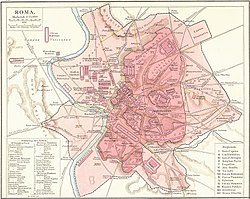Arch of Titus

The Arch of Titus, showing the "Spoils of Jerusalem" relief on the inside arch
|
|
| Location | X Palatium |
|---|---|
| Built in | c. AD. 82 |
| Built by/for | Emperor Domitian |
| Type of structure | honorific arch |
| Related | Titus, Roman triumph, First Jewish–Roman War |
|
|
Coordinates: 41°53′27″N 12°29′19″E / 41.890717°N 12.488585°E
The Arch of Titus (Italian: Arco di Tito; Latin: Arcus Titi) is a 1st-century AD. honorific arch, located on the Via Sacra, Rome, just to the south-east of the Roman Forum. It was constructed in c. AD. 82 by the Emperor Domitian shortly after the death of his older brother Titus to commemorate Titus's victories, including the Siege of Jerusalem (AD 70). The arch has provided the general model for many triumphal arches erected since the 16th century—perhaps most famously it is the inspiration for the Arc de Triomphe in Paris, France.
Based on the style of sculptural details, Domitian's favored architect Rabirius, sometimes credited with the Colosseum, may have executed the arch. Without contemporary documentation, however, attributions of Roman buildings on basis of style are considered shaky.
The medieval Latin travel guide Mirabilia Urbis Romae noted the monument, writing: "the arch of the Seven Lamps of Titus and Vespasian; [where is Moses his candlestick having seven branches, with the Ark, at the foot of the Cartulary Tower"]
...
Wikipedia

